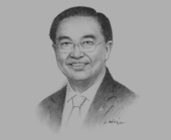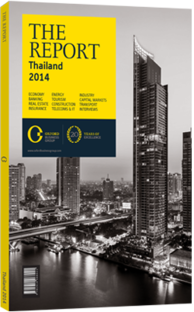OBG talks to Sorajak Kasemsuvan, Former President, Thai Airways International

Interview: Sorajak Kasemsuvan
What impact has the rise of low-cost carriers (LCCs) had on the aviation market in the ASEAN region?
SORAJAK KASEMSUVAN: The aviation industry has entered into a new chapter of fierce competition on a number of fronts. Legacy airlines, like Thai Airways, now have competition from LCCs in both domestic and regional markets. LCC growth is continuous and very intense, and we are also faced with the expansion of Middle Eastern airlines. I think most legacy airlines are facing similar problems. Due to these challenges, it is very important for any legacy airline to look into ways that operational efficiencies can be enhanced and to develop new strategies for growth, such as revenue from non-traditional sources. Thailand is well located to make the country a natural hub for the region. Most carriers want to have flights to Bangkok and, on the whole, the country benefits from this, and we should not restrict ourselves by not allowing a high degree of open skies. But it also means that the aviation industry is full of competition. As a consequence, legacy airlines have to consider where they are doing best.
To what extent has the regional and domestic passenger market changed in recent years?
SORAJAK: Over the last few years airline passengers have splintered into three segments: passengers who travel with legacy airlines and are prepared to pay for full service; passengers who are ready to go for a no-frill LCC; and passengers who are in between. The last group knows they can go with a LCC and pay less, but they do not want the low-cost experience. Most airlines these days realise they have to tap into all three segments of the market. Several airlines within and outside of the region have done that. In Europe we have seen major airlines open a low-cost subsidiary. In Asia and Thailand it is the same thing; Singapore Airlines and Cathay Pacific have both gone that way by creating low-cost or mid-range subsidiaries. This is the direction we are also moving in. With the creation of THAI Smile Air, a mid-range carrier, we are hoping to access the third segment of the passenger market. Completing our strategy, our interest in Nok Air will cater to the lowcost market, while our traditional legacy fleet will continue to cater to more premium-end passengers.
What impact will Thai Airways’ fleet renewal have on the company’s medium-term outlook?
SORAJAK: From 2013-15 we will be in the process of revamping our fleet with the delivery of 39 new aircraft. In 2013 we received 17 new aircraft, three of which were Airbus A380s. In 2014 14 new aircraft will be delivered, including four Boeing B787-8s, while in 2015 we will receive eight new deliveries. As the new aircraft come in it does not mean we have to ground our existing aircraft. Accordingly, in 2013 our capacity increased by 9% due to the new aircraft. We have to invest in a fleet that reflects the growing elements of our business; for Thai Airways that means focusing on the regional market. Japan, Korea and China represent our most profitable routes, so we have had to invest in medium-range aircraft. It is important to maintain homogeneity of aircraft on similar routes in order to increase cost efficiencies with respect to maintenance.
What can be expected for the development of the ASEAN “open skies” policy in 2015?
SORAJAK: The maturation of a region-wide open skies agreement will take time. Although 2015 will see a huge leap towards greater liberalisation, we must also recognise that more time will be needed to achieve parity amongst ASEAN members. As such, we need to prepare ourselves for the ASEAN Economic Community and an increasingly competitive market in 2015. I am sure we will see the ASEAN market open up in the next few years, and legacy airlines in particular need to be ready to compete both in and outside of the region. In this new environment, Thai carriers need to become fully competitive and adaptable to changing market strategies. At the same time, we have to make sure more than ever that our strength is the charm of our “Thainess”.
You have reached the limit of premium articles you can view for free.
Choose from the options below to purchase print or digital editions of our Reports. You can also purchase a website subscription giving you unlimited access to all of our Reports online for 12 months.
If you have already purchased this Report or have a website subscription, please login to continue.

